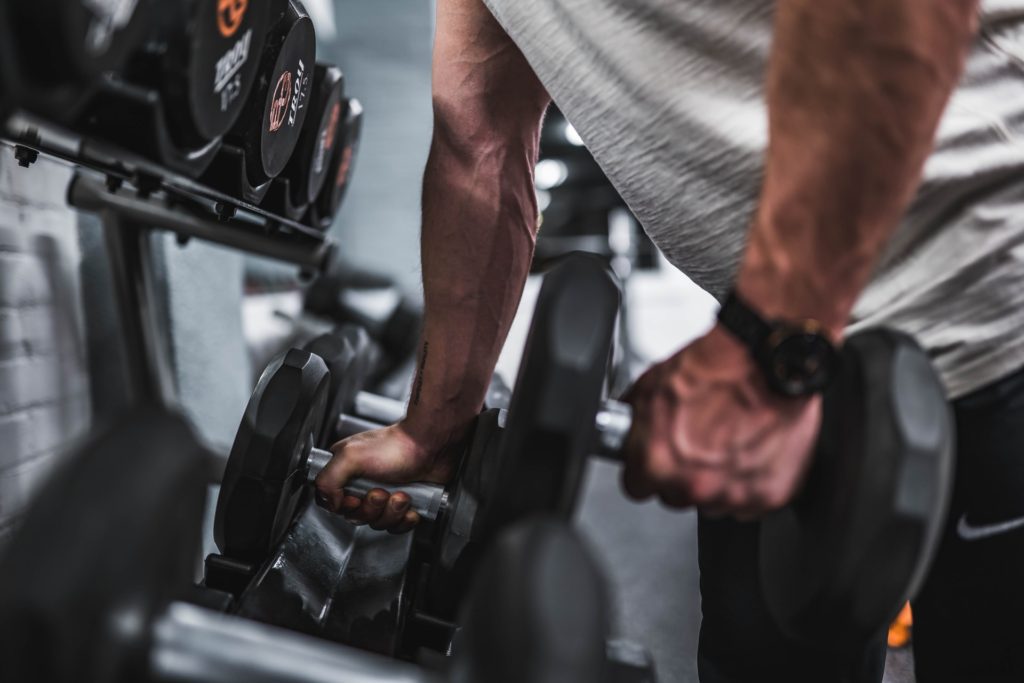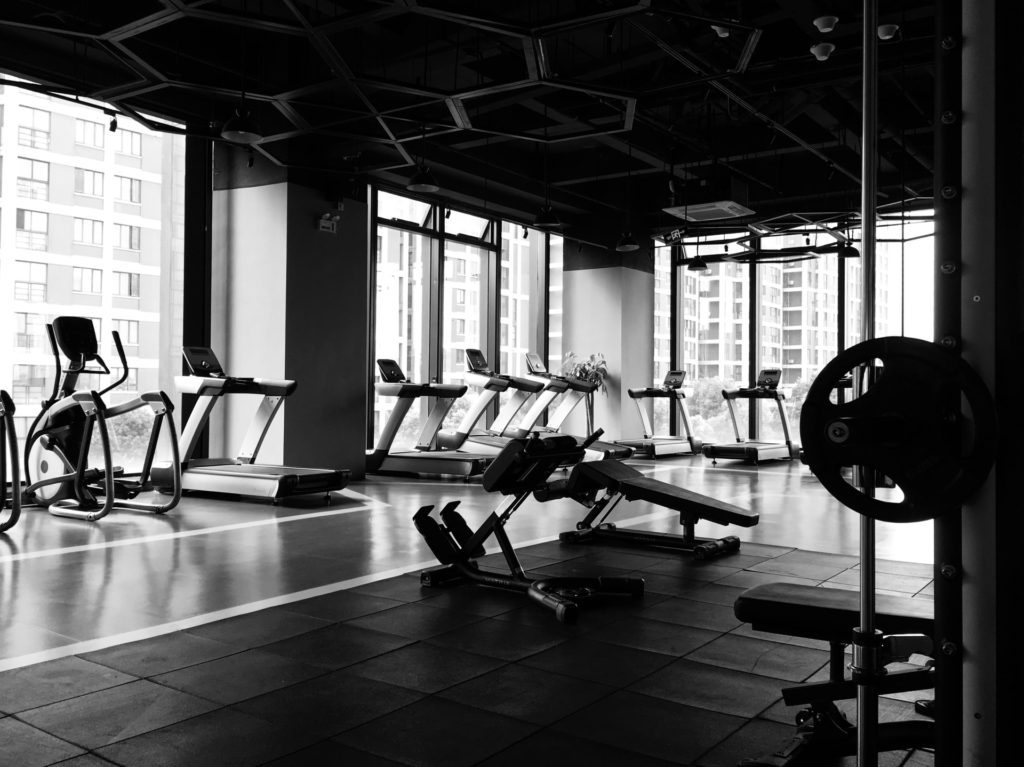Do you want to start with fitness and don’t you know where to start or have you stopped for a while and want to pick up the thread again? Don’t panic, this is exactly what we are going to help you with within this article.
Many schedules that can be found on the internet often last for months. I think this is very demotivating when you are just starting. That is why in this article we share a short schedule of 1 week that will help you to start with fitness and hopefully expand it afterward!
You can see this article as a kind of quick version of a beginner’s guide. Maybe you are shocked now; ‘a schedule that normally lasts for months packed into 1 week? That must be insanely heavy’. On the contrary! We have set up the schedule to avoid injuries, it is fully geared to beginners.
Table of Contents
- Do this before you start!
- Should I train a different muscle group every workout?
- How heavy should I train at the start?
- How many sets and repetitions should I do per exercise?
- Overview of the week
- Explanation exercises training 1
- Explanation exercises training 2
- Explanation exercises training 3

Do this before you start!
A few things are important to do before you start with the schedule. First of all, it is important to know your ‘why’. What do we mean by this? Your ‘why’ is the reason you want to get into fitness. For example, do you want to lose weight? Or do you want a more muscular body? Whatever your personal reason is, write it down. This will motivate you to persevere at times when you may want to give up.
The second point is in line with this; namely goal setting. Your ‘why’ we just mentioned is very general, while your goals should be very specific. For example, you can aim to lose 5 kilos. It is important to have both short- and long-term goals.
Should I train a different muscle group every workout?
Many athletes claim that it is better to train a different muscle group every workout. However, this is not true at all! Why is this often done among athletes?
Your muscles must get enough recovery time, after strength training the trained muscles need about 48-72 hours to recover. This is why many athletes divide their workouts into muscle groups; the muscles that you do not train during a workout can recover. If you are not used to exercising a lot, your muscles definitely need that recovery time! That is why we also use a division into muscle groups in the scheme to prevent overload.
How heavy should I train at the start?
This is surely one of the most requested things when people start with fitness. And the answer is simple, yet quite difficult to implement for many people. Make sure you start simple. Start with very low weights and focus on the execution first. If your execution is good then you can focus on progression and go a little heavier if your execution stays good!
Why is this so difficult for many people? Many people who are just starting in the gym have already been presented with a lot of comparison material. For example, they have already seen people lifting huge weights on social media. When they come to the gym, they immediately want to test how heavy they can lift. Please, don’t be such a person! Start slow and build up slowly, this will ultimately benefit you the most.

How many sets and repetitions should I do per exercise?
If you’re starting, I’d recommend doing 3 sets of each exercise with about a 1-2 minute break between sets. In terms of repetitions, I would try to get to 12. Is 12 easy for you? Then you can use some heavier weights. Can’t get 12? Then use lower weights.
The repetitions you do also very much depend on your goals in fitness. The fewer repetitions you do, the more you will focus on muscle strength. If you do more repetitions, you will focus more on muscle condition. 12 rehearsals is a middle ground in between. But if you want to focus specifically on muscle strength, for example, do about 6 repetitions and if you want to focus on muscle condition, do about 15 repetitions.
Overview of the week
As we have just discussed, it is recommended that you perform 3 sets of each exercise with a 1-2 minute break between each set. You can also add an extra set at the beginning with a very low weight to warm up your muscles. Try to get to about 12 repetitions in each set. Below you can see the schedule:
| Monday | – Chest press – Chest fly – Shoulder press – Dumbbell lateral raise – Tricep extension |
| Tuesday | Rest day |
| Wednesday | – Lat pulldown – Seated row – Seated rear lateral raise – Bicep curl – Ab crunch machine |
| Thursday | Rest day |
| Friday | – Leg press – Leg extension – Hamstring curl – Calf raise – Walking lunge |
| Saturday | Rest day |
| Sunday | Rest day |
As you can see it’s a pretty simple schedule, we deliberately chose not to make it too overwhelming at the beginning. It is of course possible to repeat this schedule for another week, this is a perfect way to see whether you have mastered the exercises better.
We are now going to explain the exercises in the schedule to ensure that you can perform them properly. Keep in mind that your gym may not have the exact same machines from the videos we’re about to show. However, there is a huge chance that for every exercise there is a machine that is almost the same, the principles are the same.
Explanation exercises training 1
Exercise 1 : Chest press
The first exercise is the chest press. There are some points of attention for this exercise:
- Keep your chest out during the exercise
- Try to focus on delivering the power from your pecs
- Do not move your shoulders during the exercise, keep them fixed
Exercise 2 : Chest fly
The second exercise is the chest fly. There are some points of attention for this exercise:
- Make sure you sit upright with your chest out
- Keep your elbows slightly bent, but make sure you keep your elbows at the same angle during the exercise.
- Try to focus on delivering the power from your pecs
Exercise 3 : Shoulder press
The third exercise is the shoulder press. There are some points of attention for this exercise:
- Make sure you sit upright during the exercise
- Begin the move up just before the weights touch
- Move down slowly, so you keep tension on your shoulders
Exercise 4 : Dumbbell lateral raise
The fourth exercise is the dumbbell lateral raise. There are some points of attention for this exercise:
- Do not use momentum from your body, keep your body still and move from your shoulders
- Return down with the weights when your arms are at about a 90-degree angle with your body
- Make a calm, controlled movement, both when moving up and down
Exercise 5 : Tricep extension
The fifth exercise is the tricep extension. There are some points of attention for this exercise:
- Tighten your abdomen during the exercise
- Keep your upper arms in the same place during the exercise, do not move them
- Make sure your upper arms always rest on the plank, don’t let them ‘float’ above it
Explanation exercises training 2
Exercise 1 : Lat pulldown
The first exercise is the lat pulldown. There are some points of attention for this exercise:
- Move the bar to the top of your chest
- After you have moved the bar down, move the bar all the way up to create a good stretch in your back muscles
- Move the bar slowly, keep the movement controlled
Exercise 2 : Seated row
The second exercise is the seated row. There are some points of attention for this exercise:
- Move the bar towards the bottom of your chest
- Make sure you sit upright with your chest out
- Focus on delivering the power from your back muscles
Exercise 3 : Seated rear lateral raise
The third exercise is the seated rear lateral raise. There are some points of attention for this exercise:
- Lean forward slightly with your body
- Do not perform the movement too far back, make sure that your hands do not come out behind your body
- Keep your elbows slightly bent, but make sure you keep your elbows at the same angle during the exercise.
Exercise 4 : Bicep curl
The fourth exercise is the bicep curl. There are some points of attention for this exercise:
- Don’t use momentum from your body to lift the weight
- Lower the weight as far as possible until the weights just don’t touch each other, this way you make the biceps completely long again before contracting your biceps
- Perform the exercise slowly, keep it controlled
Exercise 5 : Ab crunch machine
The fifth exercise is the ab crunch machine. There are some points of attention for this exercise:
- Make the movement until the weights just don’t come together, so you keep tension on your abs
- Focus with your eyes on a point directly in front of you to keep your neck straight
- Make the range of motion as large as possible
Explanation exercises training 3
Exercise 1 : Leg press
The first exercise is the leg press. There are some points of attention for this exercise:
- Place your feet about shoulder width apart
- Start so that your lower leg forms a 90-degree angle with your upper leg
- Don’t stretch your legs completely, you knees will then be ‘locked’, always keep a small bend
Exercise 2 : Leg extension
The second exercise is the leg extension. There are some points of attention for this exercise:
- Always hold on to the handles during the exercise
- Make sure you sit upright with your chest out
- Point your toes up as much as possible
Exercise 3 : Hamstring curl
The third exercise is the hamstring curl. There are some points of attention for this exercise:
- Adjust the machine so that the plank makes contact with your leg just above your heel
- Keep your feet straight during the exercise
- Go back up with your leg just before the weights touch, this way you keep tension on your hamstrings
Exercise 4 : Calf raise
The fourth exercise is the calf raise. There are some points of attention for this exercise:
- Make sure your upper legs are clamped well under the plank
- Bring your heel down as far as you can during the exercise
- Do not use momentum of your body during the exercise
Exercise 5 : Walking lunge
The fifth exercise is the walking lunge. There are some points of attention for this exercise:
- Using weights is optional with this exercise
- Don’t touch the ground with your knees while sagging
- Don’t step too far forward, about a meter is enough
Lifestyle coach [5+ years of fitness experience]